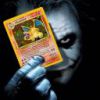 39
391)
Bromobenzene -----(Dow's process)--> Phenol.
Phenol + Cl2/FeCl3 ---> para-chlorophenol
Para-chlorophenol ---(Dow's process)--> 4-hydroxyphenol
4-hydroxyphenol + Sodium/Sodium chloride --> 4-methoxyphenol
2)
Nitrobenzene + conc HNO3/conc H2SO4 --->
Dinitrobenzene (meta position)
Dinitrobenzene + (NH4)2S ----> m-nitro aniline
m-nitroaniline + NaNO2/HCl ---> Diazonium salt
Diazonium salt + H2O/warm ---> m-nitrophenol
 13
131) Dow's process gives low yield naa & takes place in drastic conditions ? Isn't there a better alternative to insert -OH in the ring (frm a halide, apart frm the diazonium one) ?
2) [1] Bahut sahi!
 39
39There are 5 methods to prepare a phenol....Cumene-hydroperoxide method, Dow's process, Diazonium salt method, from benzene sulphonates, and from salicylic acids. The one involving a halide directly attached to benzene ring is Dow's process..you may say yield is low because it follows benzyne mechanism. The other way to kick a halide out is the SNAr pathway, involving electron withdrawing groups...here you go.
Chlorobenzene + Cl2/FeCl3 ---> para-dichlorobenzene
Para-dichlorobenzene + conc HNO3 ---> Nitration at ortho positions.
1,4-dichloro-2,6-dinitrobenzene + sodium methoxide(1 mol) ---> 4-methoxy-2,6-dinitro-chlorobenzene (since NO2 groups make benzene acidic, it easily undergoes the nucleophilic substitution reaction)
4-methoxy-2,6-dinitro-chlorobenzene + conc NaOH(1 mol) ---> 4-methoxy-2,6-dinitrophenol (Again SNAr)
4-methoxy-2,6-dinitrophenol + Sn/HCl + NaNO2/HCl + H3PO2 ---> 4-methoxyphenol (Diazonium salt formation and reduction)
 39
39Third one is by Schiemann reaction.
Benzoic acid + conc HNO3/conc H2SO4 --> m-nitrobenzoic acid
m-nitrobenzoic acid + Sn/HCl ---> m-aminobenzoic acid.
m-aminobenzoic acid + HBF4/NaNO2 ---> m-fluorobenzoic acid (Schiemann reaction)
 13
13Thnx Pritish [1]
Noone trying out 4)th,,, easy hai. (Not my doubt though)
 1
1pritsh = organic boss at tarhet iit !!! is nt it??
